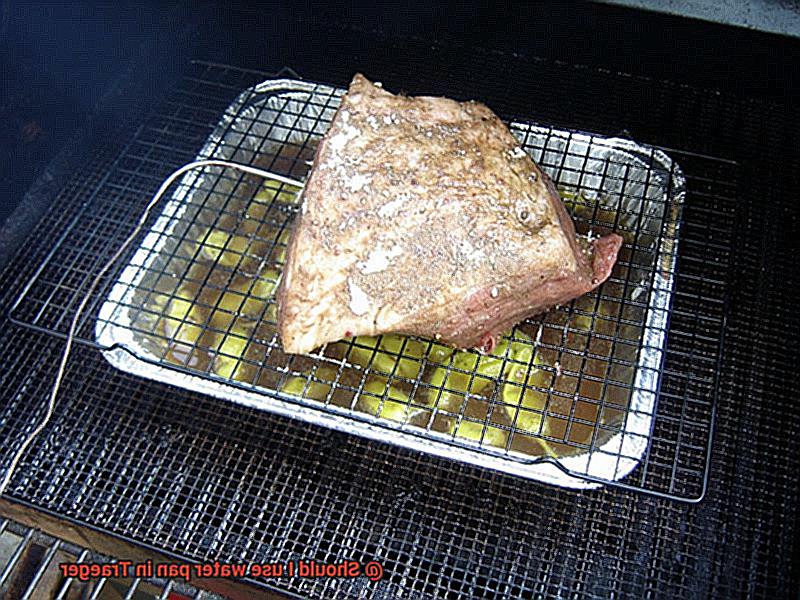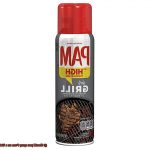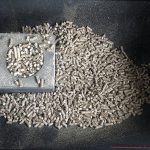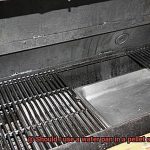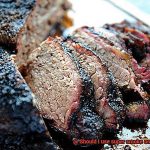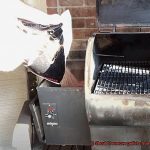Grilling is a culinary art form, and every chef has their own tricks up their sleeve to add that extra flavor to their cuisine. Traeger grills have become increasingly popular among grill enthusiasts due to the smoky flavor they infuse into the food. But here’s the million-dollar question: Should you use a water pan in your Traeger grill? The answer is simple – it depends on what you’re cooking.
Some Traeger owners swear by using a water pan for their grilling, while others dismiss it as a waste of time. So, what’s the truth? Well, it lies somewhere in between. A water pan can be an incredibly useful tool in certain circumstances, but it’s not always necessary.
In this blog post, we’ll take a deep dive into the world of Traeger grilling and answer the age-old question of whether or not to use a water pan. We’ll explore why people use water pans, when they’re appropriate, and when they’re not necessary. Additionally, we’ll discuss some alternative methods that can achieve similar results.
Whether you’re a seasoned grilling expert or just starting out on your culinary journey, this post has got everything you need to know about the role of water pans in Traeger grilling. So sit back, relax and let’s get started.
Contents
Benefits of Using a Water Pan in Traeger Grills
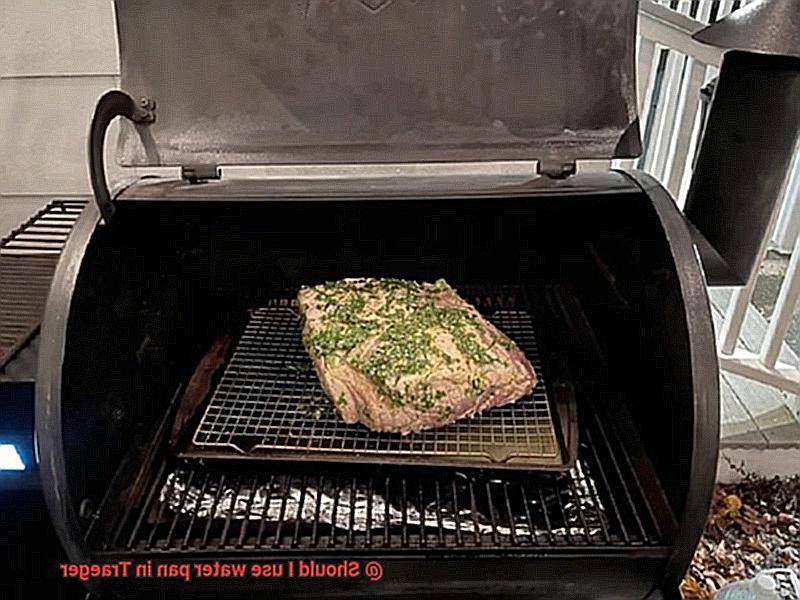
Traeger grills are a staple in the world of outdoor cooking, and using a water pan can take your grilling experience to the next level. A water pan is a simple yet effective tool that can provide several benefits to enhance your Traeger grilling game.
One of the main benefits of using a water pan is that it helps regulate temperature inside the grill. By creating a moist and humid environment, it can prevent hot spots and keep the temperature consistent. This is especially useful when cooking low and slow dishes like brisket or pork butt, as it helps keep the meat tender and juicy.
In addition to regulating temperature, the water pan can also act as a shield to protect your food from direct heat. It prevents it from drying out or burning, and distributes heat more evenly throughout the grill. This ensures that your food is cooked thoroughly and consistently every time.
Another great benefit of using a water pan is the added flavor it can infuse into your food. By adding herbs, spices, or even beer to the water in the pan, you can impart extra flavor into your meat as it cooks. This method works especially well for longer cooking times and slow-cooked dishes.
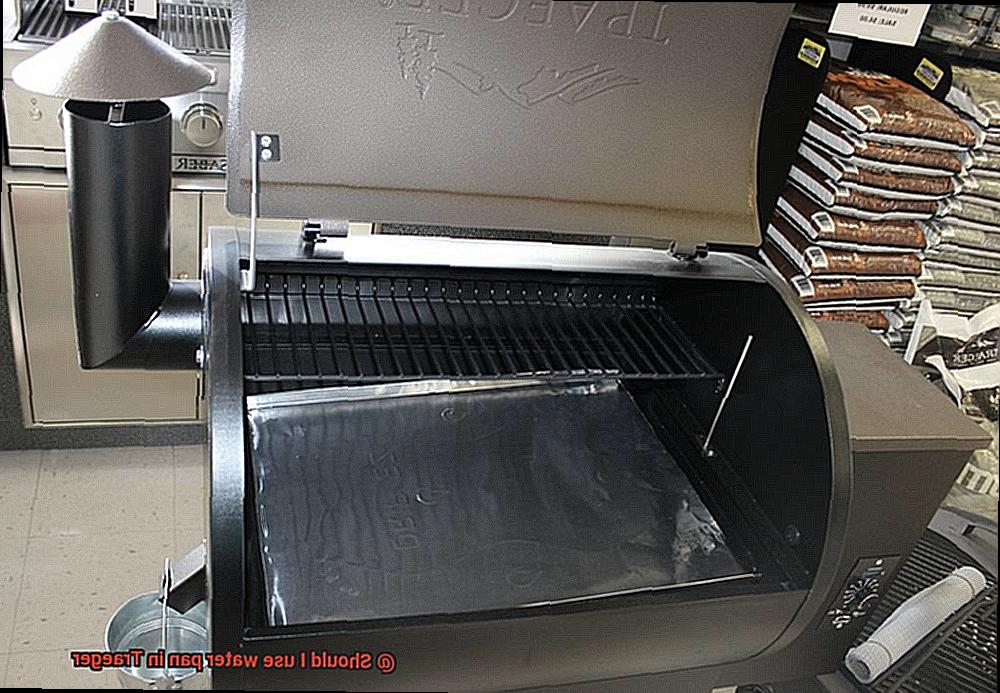
Using a water pan can also make cleaning up after your grilling session much easier. It catches any drippings from the food and prevents them from sticking to the grill grates, making them much easier to clean. This saves you time and effort in post-grilling cleanup.
Drawbacks of Using a Water Pan in Traeger Grills
When it comes to using a water pan in your Traeger grill, there are some significant drawbacks to keep in mind.
Firstly, using a water pan can increase your cooking time. The water absorbs heat and slows down the cooking process, which can be frustrating if you’re looking to cook your food quickly. So if you’re short on time or have ravenous guests waiting for their meal, using a water pan may not be the best option.
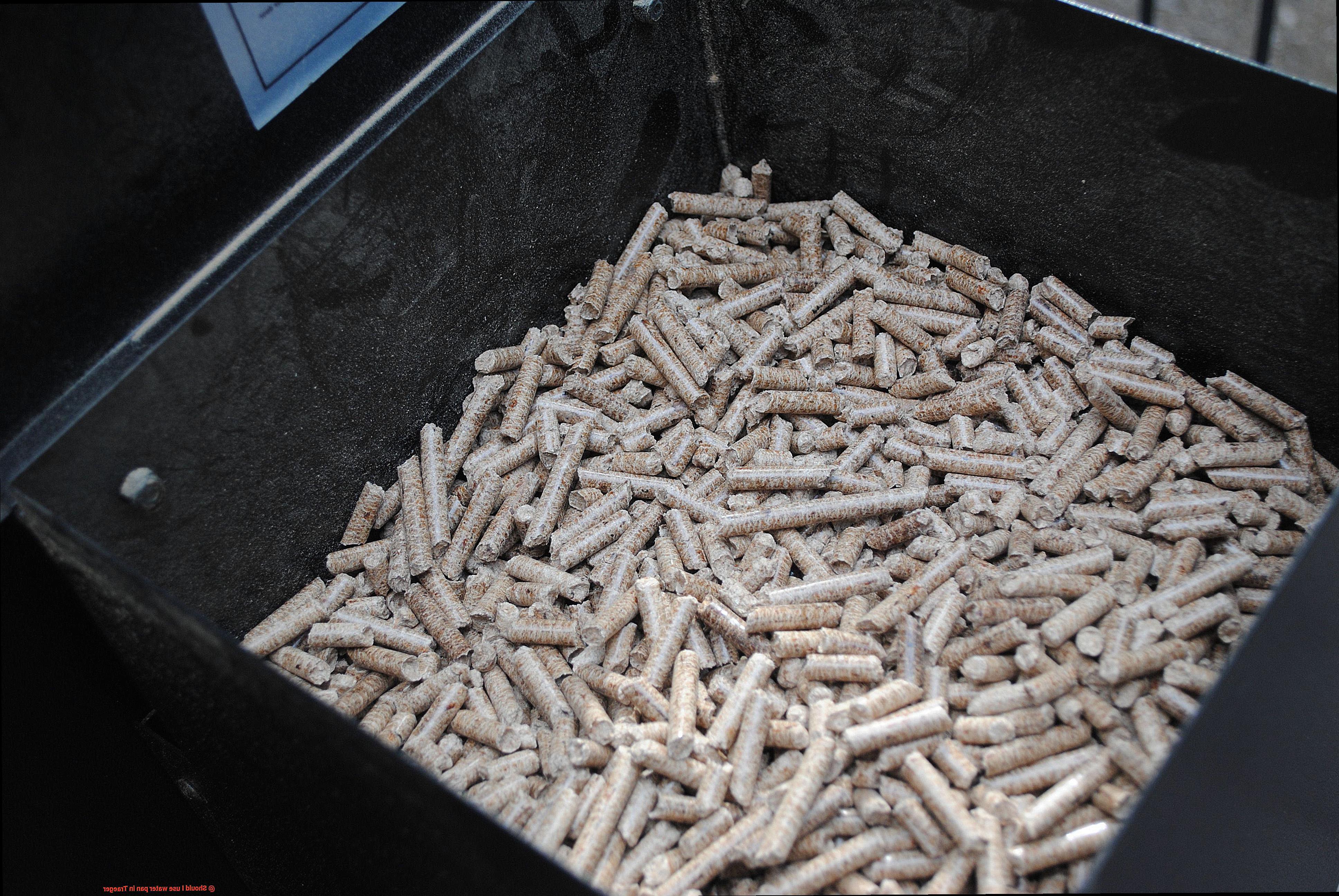
Another drawback of using a water pan is that it can affect the texture of your meat. If you’re after that crispy skin on your chicken or pork, using a water pan can prevent that from happening. The steam created by the water pan can make your meat less crispy and less appetizing. This can be especially problematic when grilling meats where a crispy skin is often desired.
Using a water pan can also create a mess inside your grill. As the water heats up, it can cause steam to escape and condensation to form inside the grill. This condensation can drip back onto your food, making it soggy and unappetizing.
And let’s not forget about cleaning up. Using a water pan can make cleaning your Traeger grill more challenging than usual. The water and condensation that accumulate during cooking can collect in hard-to-reach areas of the grill, making it difficult to clean thoroughly.
To summarize, here are all the drawbacks of using a water pan in Traeger grills:
- Increase cooking time
- Affect the texture of meat
- Create a mess inside the grill
- Make cleaning up more challenging
Tips for Using a Water Pan in Traeger Grills
Traeger grills are a game-changer when it comes to producing smoky, perfectly grilled meat. And if you’re looking to take your cooking game up a notch, using a water pan in your Traeger grill can help keep your food moist and flavorful. Here are some tips and tricks to get the most out of using a water pan:
Understand the purpose of a water pan
When cooking low and slow, a water pan is designed to add moisture to the cooking environment, which can prevent food from drying out and becoming tough. It also helps regulate temperature.
Place the water pan correctly
To make sure the water pan works effectively, place it directly above the heat source, whether that’s the fire pot or the heating element depending on your model of Traeger grill. This allows steam to circulate throughout the cooking chamber.
Use hot water
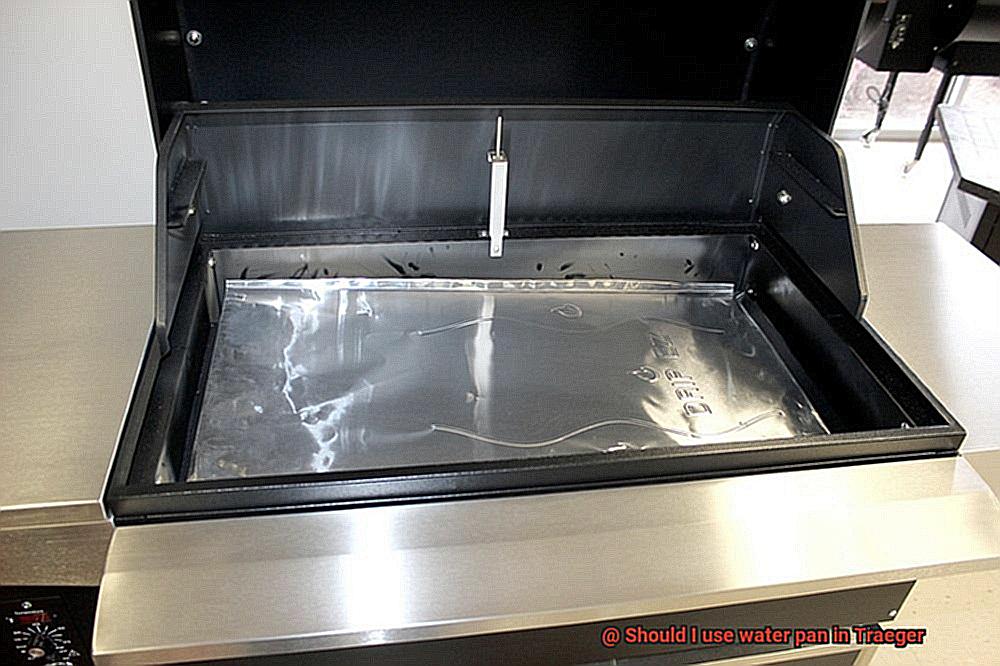
Starting with hot water in your pan will help speed up the process of creating steam and ensuring that your food stays moist throughout the cooking process. You can even add herbs or spices for additional flavor.
Monitor the water level
Check on the water level in your pan periodically throughout cooking as it’s important to keep it from running dry. But adding too much water can cause the grill to steam, affecting the meat’s flavor.
Clean your water pan regularly
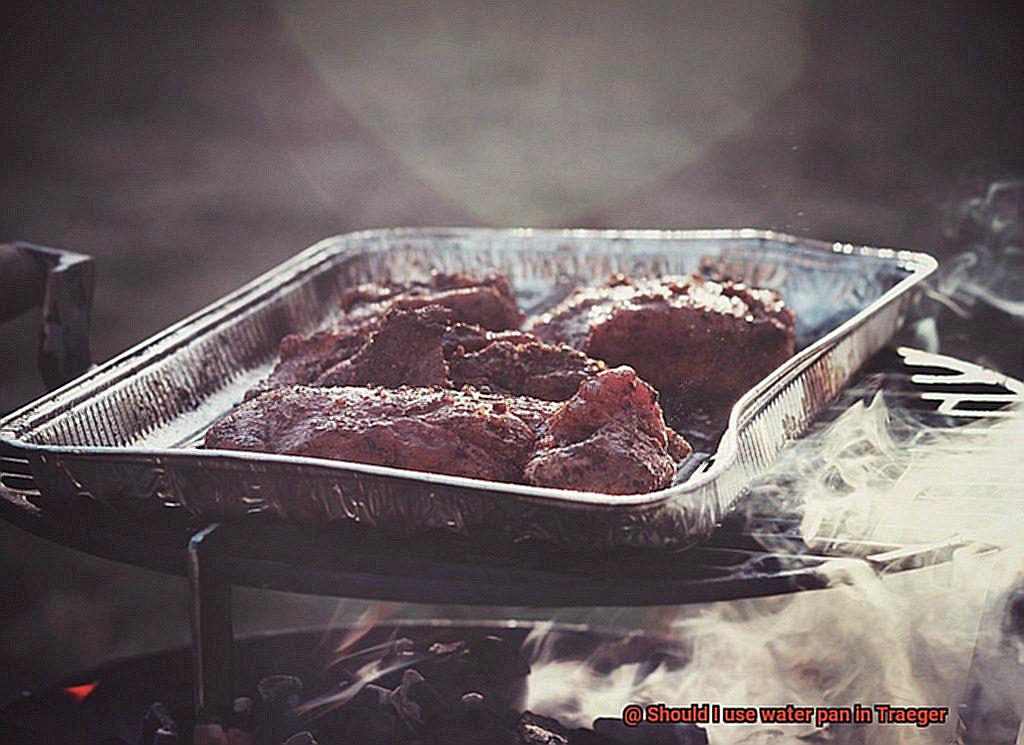
Grease and other debris can build up in your pan over time, affecting its performance. Clean it regularly by removing it from the grill and washing it with warm soapy water.
What to Look for When Buying a Water Pan for Your Traeger Grill
Grilling on a Traeger is an experience like no other. But to achieve the perfect flavor and texture, you need the right tools. One such tool is a water pan, which can help regulate temperature and add moisture to your food. Here are five crucial factors to consider when buying a water pan for your Traeger grill:
Compatibility
The first and most important factor to consider is compatibility. Ensure that the water pan you choose is compatible with your Traeger grill model. Failure to do so may result in ill-fitting pans that may not work effectively.
Size
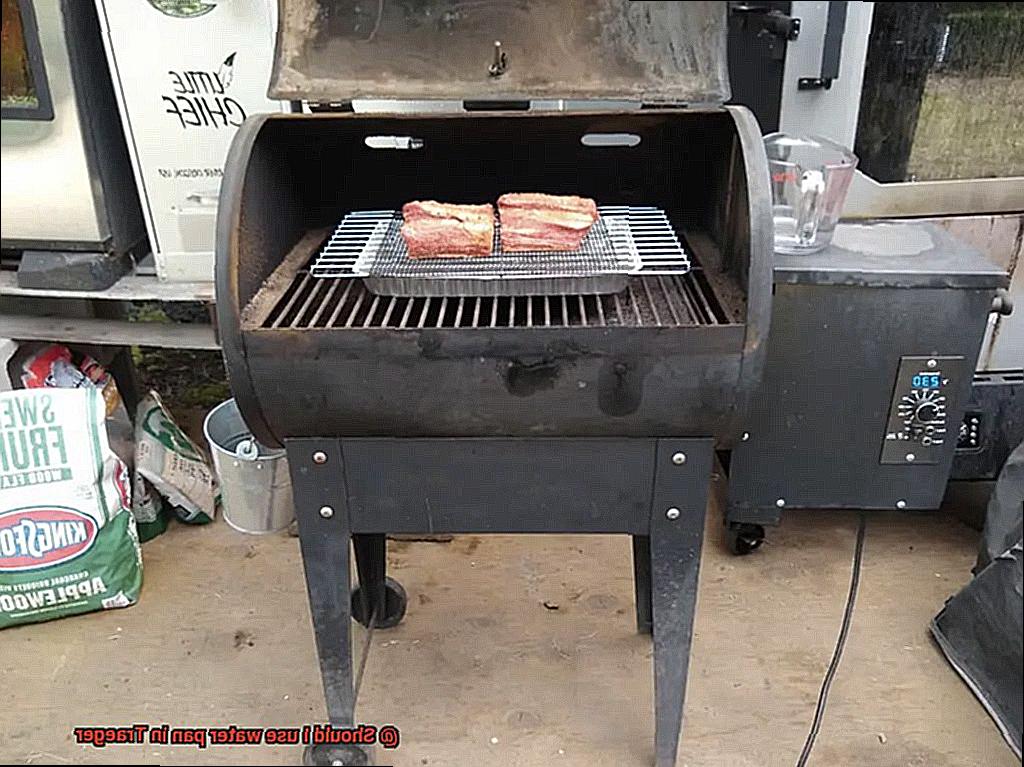
The size of the water pan is also crucial. You want a pan that’s large enough to hold sufficient water to maintain moisture levels in your grill, but small enough to fit comfortably inside your Traeger without taking up too much space.
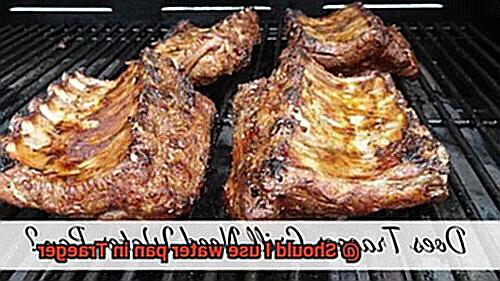
Material
The material of the water pan is another essential consideration. Look for durable and sturdy materials that can withstand high temperatures and won’t corrode over time. Stainless steel and aluminum are popular options due to their durability and resistance to rust and corrosion.
Shape
The shape of the water pan should also be considered, especially if you have a Traeger model with an angled drip tray. In this case, you’ll need a uniquely shaped pan that will fit comfortably in your grill.
Additional Features
Finally, consider any additional features that may be helpful for your grilling needs. For example, some water pans come with handles or grips for easy removal from the grill, while others may have a non-stick surface for easy cleaning.
How to Clean and Maintain Your Water Pan
A well-maintained water pan in your Traeger grill is essential for achieving optimal grilling results. Here are some detailed tips on how to clean and maintain your Traeger grill’s water pan:
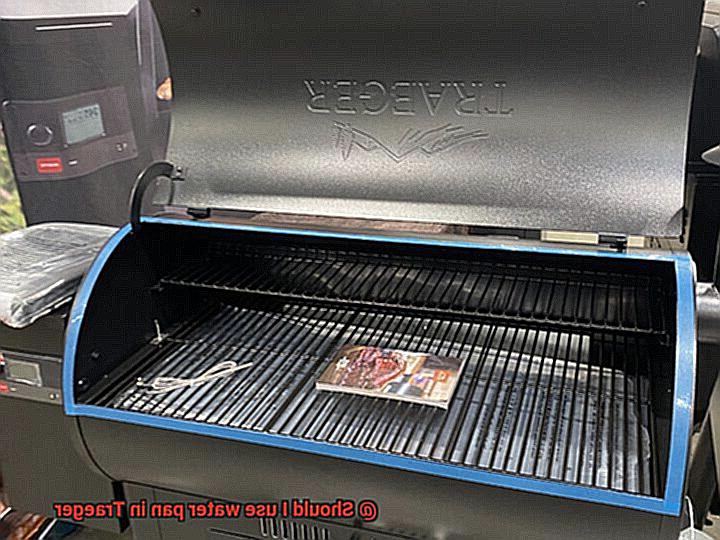
Removing Excess Water and Debris
Before cleaning your water pan, ensure that you remove any excess water or debris from inside. This can be done by carefully pouring out any remaining water and wiping down the inside with a damp cloth or sponge.
Thorough Cleaning with Mild Detergent or Dish Soap
Once you have removed any debris, use a mild detergent or dish soap to clean the pan thoroughly. Avoid using harsh chemicals or abrasive scrubbers as this can damage the pan’s surface. Instead, opt for a soft-bristled brush or non-abrasive scrubber to gently remove any buildup or residue.
Rinsing and Drying
After cleaning, rinse the pan thoroughly with warm water and dry it completely before placing it back inside the grill. This will prevent any rust or corrosion from forming on the surface of the pan over time.
Replacing Your Water Pan
If you notice any rust or discoloration on your water pan, it may be time to replace it. Traeger offers replacement parts on their website, so you can easily find a new water pan for your grill.
Regular Cleaning and Maintenance
It is recommended to clean and maintain your water pan after every use to avoid any buildup of grease or food particles that can affect the flavor of your food or cause damage to the pan over time. By following these simple steps, you can ensure that your Traeger grill performs at its best every time you use it.
How to Use the Water Pan to Achieve Different Cooking Temperatures
If you’re looking for a way to up your Traeger grilling game, consider using a water pan. This simple tool can help you achieve different cooking temperatures and add moisture to your dishes for juicy and flavorful results.
To start, fill the water pan with water or another liquid of your choice, such as beer or apple cider vinegar. Then, place the water pan on the grill grates, either directly under the food or off to the side depending on your desired cooking temperature.
For low and slow cooking, place the water pan directly under the food. This will create a gentle cooking environment that keeps the temperature consistent and prevents drying out. The water will act as a heat sink, absorbing some of the heat and creating a more even cooking environment. It also adds moisture to your food for juicy and tender results.
On the other hand, if you’re looking to cook at higher temperatures, such as grilling or searing, you may not need to use a water pan or you may need to adjust how you use it. For example, when grilling at high temperatures, you may want to remove the water pan altogether to allow for more direct heat on your food. Alternatively, you can use less water in the pan or place it closer to the fire pot for more direct heat. Keep in mind that using a water pan at high temperatures can also lead to less crispy skin on meats or less browning on vegetables.
It’s important to experiment with different liquids and placements of the water pan to find what works best for your specific cooking needs. While using a water pan may increase cook time slightly, the trade-off is often worth it for the added flavor and juiciness in your finished dishes.
Alternatives to Using a Water Pan in Your Traeger Grill
We explore some viable options that can help you achieve similar results without the need for a water pan.
Drip Pan
One alternative to using a water pan is to use a drip pan instead. This metal tray sits underneath the grates of your grill and catches any dripping juices or fats. Not only does it prevent flare-ups, but it also keeps your grill clean. Additionally, the collected juices can be used for basting or making sauces, adding even more flavor to your food.
Dry Rub
Another option is to use a well-seasoned dry rub on your meats instead of relying on moisture from a water pan. A dry rub can add plenty of flavor to your food without the need for additional moisture. However, it’s crucial to keep an eye on your meat and ensure that it doesn’t dry out during the cooking process.
Spray Bottle
If you want more control over how much liquid is added and where it goes on the meat, using a spray bottle filled with apple juice or other liquids can be an excellent alternative. This method allows for even distribution of moisture while cooking, ensuring that your food stays juicy and flavorful.
umXRJdg18CI” >
Conclusion
To sum up, the decision of whether or not to use a water pan in your Traeger grill is contingent on what you’re cooking. While some Traeger enthusiasts swear by using a water pan for their grilling sessions, others dismiss it as an unnecessary step. A water pan can be an incredibly useful tool in certain circumstances, but it’s not always essential.
Using a water pan can help regulate the temperature inside the grill, act as a shield to protect your food from direct heat, add flavor to your food, and make cleaning up after your grilling session much more manageable. However, using a water pan can also increase cooking time, affect the texture of meat, create a mess inside the grill and make cleaning up more challenging.
If you decide to use a water pan in your Traeger grill, ensure that you place it directly above the heat source and monitor the water level periodically throughout cooking. Additionally, it is crucial to clean and maintain your water pan after every use to avoid any buildup of grease or food particles that can affect the flavor of your food or cause damage to the pan over time.
On the other hand, if you prefer not to use a water pan in your Traeger grill, there are alternative options such as using a drip pan or spray bottle filled with apple juice or other liquids. By experimenting with different methods and finding what works best for your specific cooking needs, you can achieve perfectly grilled meat with rich smoky flavors every time.
In conclusion, whether or not you choose to incorporate a water pan into your Traeger grilling routine ultimately depends on personal preference and what works best for you.

